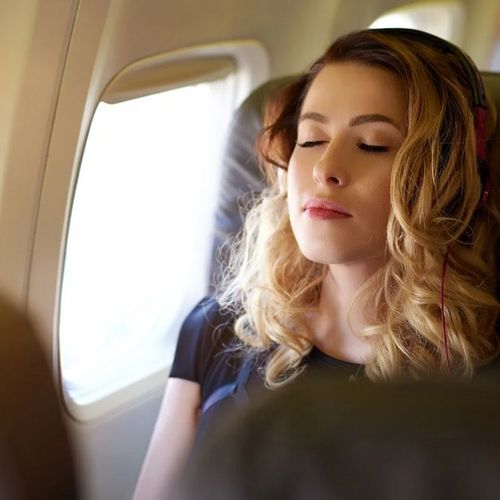Sitting still for hours is not the only factor that puts air travelers at risk for blood clots. The low-pressure. low-oxygen environment of the plane's cabin may also play a role, new research suggests.
"something in the environment of an airplane, for instance the low pressure, affects the clotting system of some people, particularly those with risk factors, in away that predicts a higher risk of thrombosis," says Dr. Frits R. Rosendaal, senior author of a study and a professor of clinical epidemiology of haemostasis and thrombosis at Leiden University Medical Centre in the Netherlands.
The Study
The study involved 71 men and women, 40% of whom were at a higher risk of blood clots. Concentrations of certain blood-clotting markers in the blood were measured before, during and immediately after an eight-hour flight; before, during and after eight hours of sitting in a movie theater; and during eight hours of a regular mobile day.
Approximately 10% of the air travelers showed a change in blood that's indicative of a higher risk of clotting, and only very few who were sitting in the theater or participating in daily life showed a similar increased risk, Rosendaal says. The 10% who were at a higher risk of clots were primarily the people who were already at high risk due to other factors, he adds.
Because the people who were sitting in the movie theater for eight hours did not exhibit a higher risk of clotting, the study concludes that there are factors in addition to forced immobilization that contribute to the increased risk of blood clots on a plane.
Provocative Findings
Although the study was small, Dr. Steven Deitelzweig, chairman of hospital medicine at the Ochsner Clinic Foundation in New Orleans, calls the finding "provocative," and one that could help develop effective prevention strategies.
Previous research has found that the risk of blood clots after plane travel (a phenomenon sometimes called economy-class syndrome) is two to four times higher than at other times. However, the mechanisms behind this phenomenon remain unclear. Data also suggest that longer flights carry a greater risk of blood clots than shorter flights.
"While recent research has shown that air travel is related to an increased risk of thrombosis [blood clots], there were questions about the cause," Rosendaal says. 'Was it just sitting still for a long time that increased the risk or was it also due to factors specific to air travel? "For the latter, people have suggested that the low pressure in the cabin [equal to a mountain altitude of 2,500 meters] could increase the tendency of the blood to clot," he adds.
Recommendations
The findings do not point to any clear change in current practice. "It doesn't change the management approach," Deitelzweig says. "People at high risk still get low-molecular heparin [an anticlotting drug]." In addition, "Everybody needs to be well-hydrated, and compression stockings may play a role" in preventing clots, he says.
Rosendaal stresses that the "indiscriminate use of aspirin, heparin or other drugs to prevent thrombosis should be discouraged, since the risks probably outweigh the benefits." However, people who are at high risk for blood clots should consider safe preventive measures, such as regular exercise and refraining from sleeping pills or excess alcohol during air travel.
